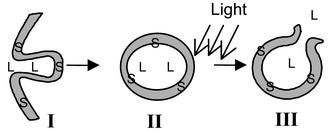Photochemically enhanced gene delivery with cationic lipid formulations
Abstract
Entrapment and degradation of transfecting DNA in endocytic vesicles often hampers the use of lipidic vectors for gene delivery purposes. Photochemical internalisation (PCI) is a technology for achieving light-induced release of DNA trapped inside these vesicles, and therefore represents a way of overcoming the endocytic membrane barrier and improving gene transfer. The technology is based on utilising photosensitizers which localise in the membranes of endocytic vesicles, causing photochemical damages that rupture the vesicles upon illumination. The purpose of this work was to study the effect of PCI on transfection mediated by the cationic lipid N-(2-aminoethyl)-N,N-dimethyl-2,3-bis(tetradecyloxy)-1-propanaminium bromide (βAE-DMRIE), with or without the helper lipid 1,2-dioleoyl-sn-glycero-3-phosphoethanolamine (DOPE). It was shown that PCI has no effect on βAE-DMRIE mediated transfection, whereas it significantly enhances transfection mediated by the combination of βAE-DMRIE and DOPE . The effect of PCI was highly dependent on the timing of illumination relative to the time of DNA delivery, both regarding the sequence of, and the time between, these two treatments.


 Please wait while we load your content...
Please wait while we load your content...